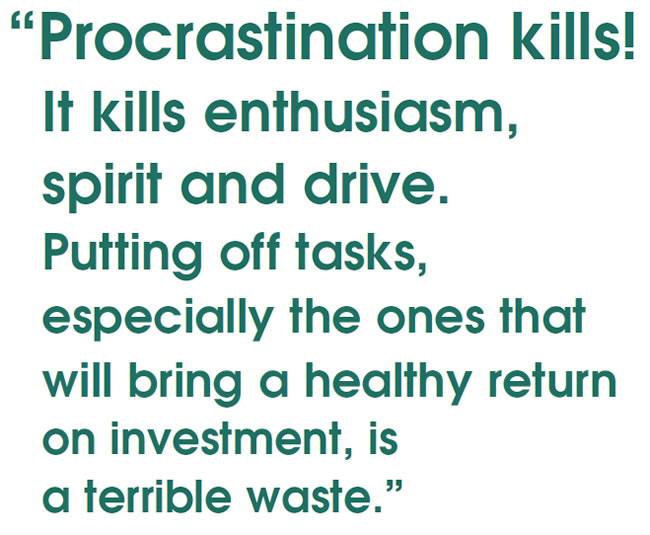
It’s Your Business
- Author: Terry Greenhut, Management Editor
I’d heard the shop’s radio commercials. They sounded provocative and interesting. They were the kind that could easily make potential customers respond if they awoke one day to find they had a transmission problem.
I’d read the shop’s yellow-pages ad. It was consistent with the radio commercial. It discussed the possibility of saving customers money, which is always good for getting their attention. It said: “Why spend more than you have to? Many transmission symptoms are caused by something minor that may not even be part of the transmission. Call now for a free diagnostic checkup.”
That sounded good. It gave the customers hope that they might not have as big a problem as they thought. At the same time it helped to remove some of the fear of taking the car to a stranger by mentioning what they could expect to happen if they came in for the free diagnostic check. The ad featured the technician’s certifications and how many years the shop had been there serving the town. There was even an artist’s rendering of the shop building that looked pretty spiffy.
The shop manager was well schooled in telephone techniques. He knew how to get callers to agree to diagnostic appointments and wasn’t into quoting “take it or leave it” prices over the phone. If they called he could get them to come in or let the shop send out a tow truck to haul in the ones that didn’t move or that customers were afraid to drive.
All good so far, but the situation is about to deteriorate quickly. The shop’s location is on the main drag, where hundreds of cars and trucks pass by every hour. The signage and the building are easily visible from the road. The pole sign out by the curb looks good but a bit small for one you would want people to read at 40 mph. The sign on the front of the building is even smaller and almost impossible to make out.
No parking is allowed directly in front of the building because of an access road that allows cars to get through to the building next door. Consequently, the shop’s customers park on the right side of the shop. If anyone were to look at the front of the building when the four overhead doors were closed, they would swear that the shop was out of business. That’s how dingy, dark and disgusting the front of the building looks. The doors have no windows in them, so there’s no way to see whether there is any activity inside. They’re painted, as the entire building is, a hideous shade of green that looks as if it had been applied with a brush. The worst part is that the green is trying to cover an old light-blue paint job but isn’t getting the job done. The blue is showing through the green. The entire image is one step below ugly.
Looking at the beautiful drawing in the yellow-pages ad and then at the ugly front of the building, one could make a case for misrepresentation. If I were a customer who saw a good-looking picture in an ad and got there to find this “Tobacco Road-looking” building, I’d hightail it out of there, figuring that if they are going to misrepresent what the building looks like, what else are they going to lie about?
How much could it possibly cost to put a proper paint job on the front of that building? $500, $1,000, $2,000 – what’s the difference? Every day that building is scaring away hundreds, if not thousands, of dollars worth of business.
Now, it would be one thing if the owner weren’t aware of the problem, but he is. He knows it all too well. He even intends to do something about it. He’s had that intention for more than a year, but it never seems to happen. He even went and bought the paint. It’s sitting right in his office. He says he’s waiting for business to slow on a sunshiny day when he can get his crew of technicians out there to do what I’m sure they’ll love and do well; paint his building. After all, it was another crew of technicians who painted it this well a few years ago.
If the shop is busy, why not leave the technicians to do what they do best: make money for the shop by fixing cars. Then, take a relatively small amount of that money and pay someone with a spray gun and some know-how to paint it right and in the near future, like maybe within a week. Otherwise, there’s a good chance that the building won’t get painted for another year.

Procrastination kills! It kills enthusiasm, spirit and drive. Putting off tasks, especially the ones that will bring a healthy return on investment, is a terrible waste. This is especially true of one specific task: outside sales. That’s the one every shop owner will readily admit must be done but at the same time will give every excuse in the book for not doing.
Outside sales is not a one-time task. It’s an ongoing process that allows you to identify the types and number of accounts you will want to service, to prepare the best possible sales materials, to learn techniques that get and keep your foot in the door, to handle objections so you can land the accounts and especially to visit all existing accounts periodically to make sure they continue to exist.
So many times when I’m discussing outside selling with shop owners, they make the comment, “Yeah, I gotta do that!” When they say it, I just turn right around and ask them, “And what would be a good day for you to start?” That’s when the excuses come.
“Well, I’d like to start now, but it’s too busy or it’s too cold out or too hot, and you know you can’t go out there when it’s snowing or raining and you wouldn’t want to bother people when they’re busy, and I’d have to hire the right person first and develop the materials.”
All those excuses are nonsense. If you really want to do it you find a way around all those so-called obstacles, and you do it quickly.
Why do we put off certain tasks while we work so hard at others? My theory is two-fold. On the one hand, we put things off when we don’t have a complete understanding of how they are supposed to be accomplished. If we can’t get a clear picture in our minds of the setup and the execution of a project, we are likely to put it off until we either do it or until some outside influence forces us to start on it. On the other hand, I believe we put off particularly daunting tasks because of a fear of failure. If we don’t try, we can’t fail. That’s the theory, but the reality is that if you don’t try you automatically fail just for lack of trying.
It’s too bad that most human beings take action only when they are backed into a corner. Even business owners who are supposed to be entrepreneurs will change their routine and try something new only when the action they’ve been taking has resulted in wrinkles in their bellies. Instigating major changes to make things better seems to be a lot harder to do than starting something to keep them from getting worse. A perfect example is the shop owner who raises prices only when he’s losing money at a substantial rate. Up to that point he’s hoping that volume will somehow make up for under-pricing.
So the guy who won’t pull the trigger to paint his building or initiate an outside-sales program probably doesn’t see the value in it or can’t figure out the logistics of performing the task; the one who won’t raise his prices is most likely scared to death of losing his customers. Both of them are wrong to wait. Time is money. Allowing time to go by while money is being lost or the opportunity to make some is not being pursued is foolish. Always try to think of it this way: “If I try this and it doesn’t work, what’s the worst that can happen, and what’s the best possible outcome?”
For example, if you raise prices and 2% of your customers refuse to pay the increase, 98% of them do and you’re way ahead of the game. You might not even lose the 2% if your objection-handling and negotiating skills are up to the challenge, but if you never initiate the price increase you don’t get any benefit, and if you don’t paint the building it still looks like “Tobacco Road” and your would-be customers will belong to someone else. So what would be a good day to start?

Visit www.TerryGreenhut.com.













